- Recent Updates
- Colpoy's Bay
- Colpoy's Bay Introduction
- Spragge's Hill
- The Kalbfleisch House
- The Kalbfleisch Dock
- The Kalbfleisch Marina
- Whicher's Sawmill
- The Wrecks Near Whicher's Mill
- Frame's Falls and John Wood's Grist Mill
- Albemarle Street
- Hughenden and Whicher's Store
- The Community Hall
- The Forest Home Hotel
- The Colpoy's Bay Schoolhouse
- The Colpoy's Bay Church
- Edgehill Cemetery
- Colpoy's Bay From the Air
- A Glimpse of the Past
- Wiarton
- Berford Street
- Berford St. Part 2
- Berford St. Part 3
- Wiarton Harbour
- Bluewater Beach
- Caframo Ltd. and Wiarton Cement Works
- Wiarton Beet Sugar Factory
- Wiarton's Hotels
- Wiarton's Schools
- Wiarton's Banks
- Grand Trunk Railway Station
- The Wiarton Fish House
- The Wiarton Fish Hatchery
- Wiarton's Berford Theatre
- The Wiarton Woolen Mills
- Wiarton's Furniture Industry
- Wiarton's Hospital
- Wiarton's War Memorial
- Wiarton's Town Hall
- Wiarton's Newspapers
- Wiarton's Grist & Flour Mills
- Wiarton's Sawmill Industry
- Wiarton's Gateway
- Connecting Passages
(Links) - Present-day Map
of Colpoy's Bay - Colpoy's Bay
Lot Map (1870) 
Wiarton Timeline- Present-day Map
of Wiarton - Bibliography
- About the Author
- Site Map
(use if menu doesn't work) - Tell me your impressions!
The Wiarton Beet Sugar Factory
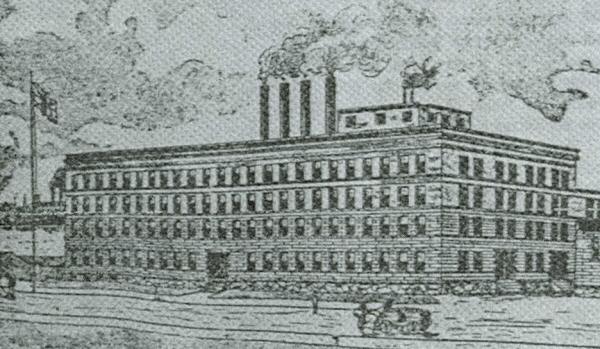
Figure
W7A: An engravaing of the Wiarton Beet Sugar Factory (about 1902)
Five years before the Wiarton Cement Works opened, another large factory established itself along the same shore a little closer to Wiarton. Figure W7A, above, shows an engraving of the beet sugar factory as published in the Wiarton Echo in advance of its construction. The sizeable four-storey brick structure would be built by the Colonial Construction Company of Detroit, dominating the shoreline of Colpoy's Bay upon its completion.
In the grandest celebration the town had ever seen, the cornerstone for the Wiarton Beet Sugar Factory was laid on June 5, 1902. The upper image of Figure W7B shows the procession of dignitaries, officials and citizens heading from Berford Street down Frank Street, en route to the ceremony (note also the short-lived Wiarton Driving Park at right, which existed from 1899 to 1908). The bottom image of Figure W7B shows the ceremony in progress at the site of the factory, still under construction at the time. An estimated 10 000 people were present for speeches and the laying of the cornerstone. This event can arguably be singled out as the greatest manifestation of Wiarton's young enthusiasm, a moment when the future of the town's industry seemed limitless. Unfortunately, along with the cement factory, the Wiarton beet sugar factory would bring harsh lessons of economic failure to the town on a grand scale.
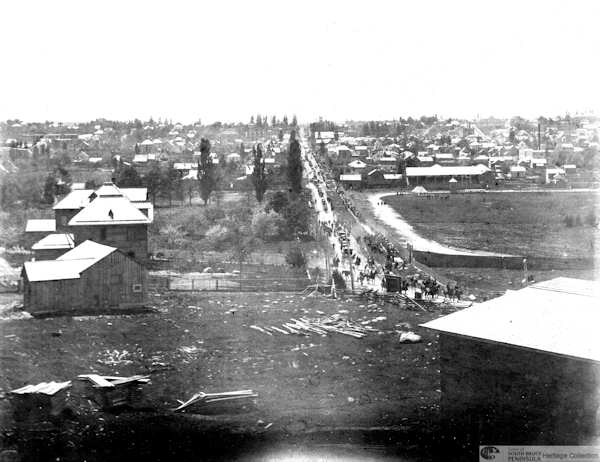
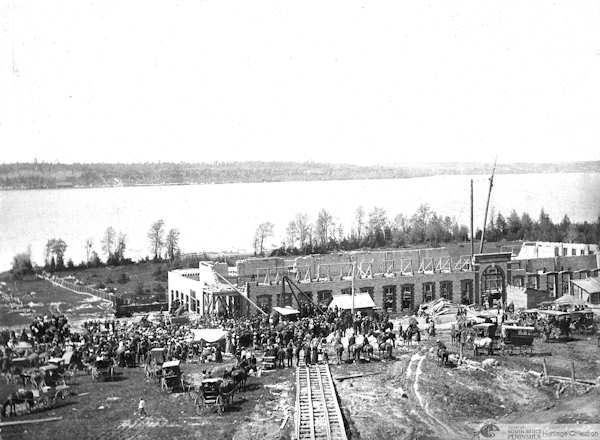
Figure W7B: Procession and ceremony for the laying of the Wiarton Beet Sugar Company cornerstone, June 5, 1902.
Beet sugar production had first begun in Canada in the 1890s in Ontario, Quebec and the prairie provinces. When the Wiarton plant began producing sugar a couple years after its cornerstone had been laid, prospects must have looked bright. Local resident Stan Wright described the operations in the book "Wiarton: 1880 to 1980" as follows:
"[The factory]got beets from Manitoulin Island and had a little dock dredged out right by the factory. ... Trains would bring the beets in on tracks, and water was running in the long sheds and then the beets would all be washed. They would be weighed on scales, then come down the ramp and have the sugar squeezed out of them. They would be boiled in the big sugar shed." [As a note, the factory was served by the same rail line that led to the Wiarton Cement Works.]
Figure W7C, below, gives two rare photographs of the factory likely from about 1903.
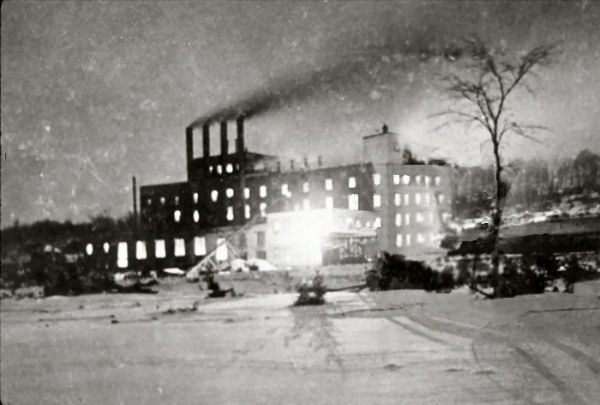
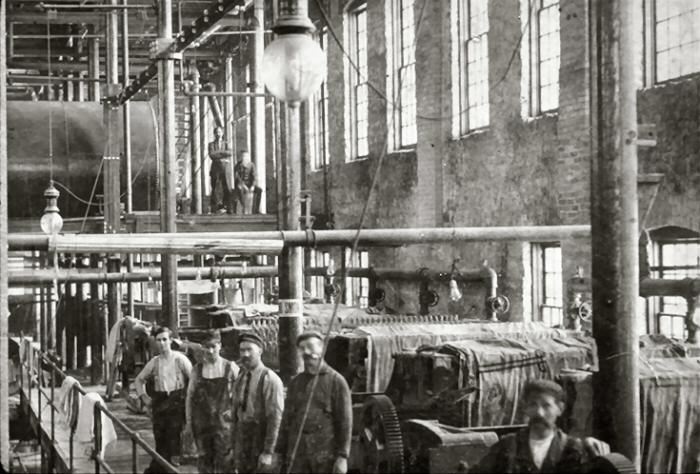
Figure
W7C: Rare photographs of the Wiarton Beet Sugar Factory in operation (about 1903 - top image retouched from damaged photo).
The top image of Figure W7C is an exterior shot looking inland from the shore of Colpoy's Bay. This photo is made all the more rare by the fact that it was taken at night (although somewhat overexposed), casting an eerie glow upon the trees who's shadows darken the fresh snow. The bottom of Figure W7C shows some employees in the interior of the Wiarton Beet Sugar Factory during its prime.
"Prime", however, is a relative word, because the beet sugar plant never operated at a profit. Although labour and beets were plentiful, it appears that incompetent management led to massive waste and inexcusably inefficient performance.
As part of the contract to build the factory, Colonial Construction Co. was to operate the firm for the first season (1902). It was a disaster! Colonial had improperly installed the equipment and completely lacked any knowledge of the beet sugar industry. As a consequence, less than half of the expected amount of sugar was obtained that year and the firm lost $63 000 (upwards of $1.3 million today). A full $50 000 (about $1 million today) worth of beets and juice were said to have literally gone down the drains and into the bay that year. To continue operations, a new superintendent was hired, Wiarton loaned the company $25 000 (over $500 000 today) and another $110 000 (over $2.3 million today) was raised by selling bonds to the public. Unfortunately, the second season brought the same type of result. On January 12, 1904, the bonds were called in. The overall cost to the town was about $200 000 (about $4.2 million today) when the population was about 2400 people!
In April of 1906, the Wiarton Echo declared that a new company was in control of the factory (likely the Dominion Sugar Co. of Chatham, Ont.), writing "The Factory will be operated in Wiarton as long as the farmers will supply the beets. This is an assured fact. ... The new company has plenty of capital, will pay cash and the financial standing of the Directors is such as to remove all doubt on this score." Figure W7D gives a spectacular view of the sugar beet factory during this period of time. To my knowledge, this is the only close-range daytime photo of the sugarbeet factory in its original condition.
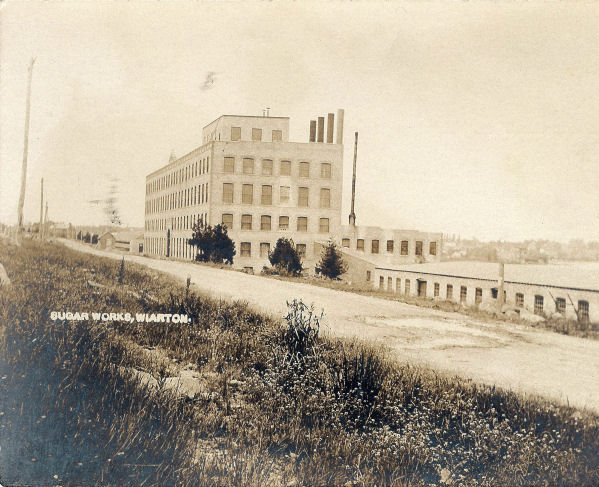
Figure W7D: A beautiful image of the sugar beet factory looking west down Frank Street toward town. (Likely taken between 1904 and 1907).
Despite new ownership, however, trouble seemed to rear its head again quite quickly though, because in May of the next year, creditors arrived to remove the electric light plant inside the factory, evidently because the company could not entirely pay for it. The Dominion Sugar Co. appears to have closed its Wiarton operations soon after, a scant five years following the factory's triumphant opening. In August of 1907, it was reported that the factory would likely be converted into a distillery. For some reason or another, however, that deal never materialized.
As the building continued to lay vacant, the Echo pitched it in 1911 as "an ideal furniture factory [available] for one-fifth its cost". But Wiarton was already served by several furniture factories and no buyers came forward.
During the first world war, the factory's empty walls served as training grounds for troops, but the mighty building was never to see commercial use again. On August 4, 1918 the controversy over the factory was settled when the Echo reported that the building had been sold for scrap and would be torn down immediately. As the walls tumbled, the Town of Wiarton was left with $11 325 (over $239 000 today) to pay on debentures it had sold to help finance the factory.
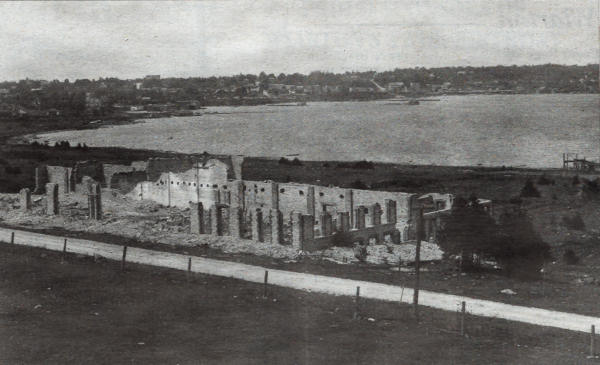
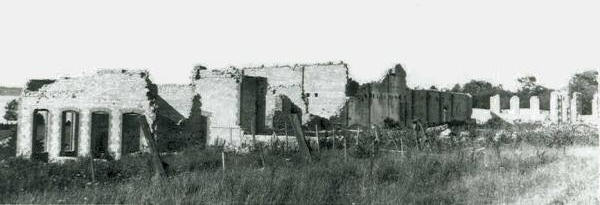
Figure W7E: The ruins of the Wiarton Beet Sugar Factory (about 1918 and 1924).
The top image of Figure W7E shows the expansive ruins of the Wiarton Beet Sugar Factory shortly after they were demolished in 1918. The lower image shows the same ruins from ground-level some six years later. Evidently the walls and foundation of the factory sat for some time as a sad reminder of dashed dreams.
The top image in Figure W7F, below, gives a spectacular view of the southern shore of Colpoy's Bay. At the left is the Wiarton Cement Works and on the right is a rare view of the intact Wiarton Beet Sugar factory. At the time of this picture, neither of these companies appear to be in operation. The fact that the cement company closed in 1917 and the sugar factory was torn down in 1918 gives us a rough idea of when this photo was taken. The bottom image of Figure W7F shows a similar view 86 years later. Today's view shows no trace of the beet sugar factory, although a portion of the cement works live on as Caframo Ltd.
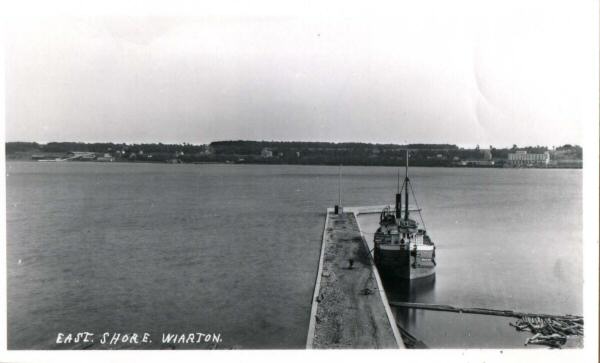
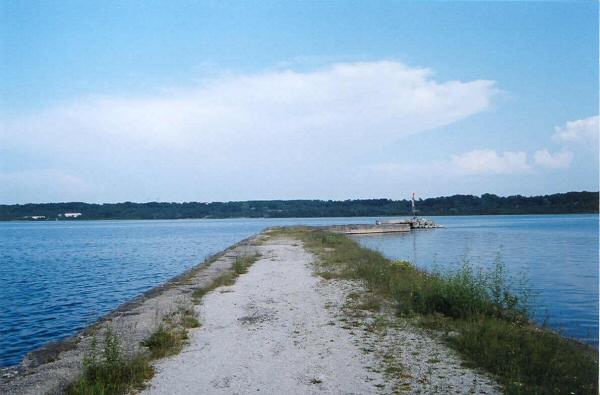
Figure W7F: A southerly view (despite caption) across the bay. Top Image (~1917): beet sugar factory is visible at right, cement works at left. Bottom Image (2004): There is no trace of the sugar factory, the cement works live on
in Caframo Ltd.
Following the destruction of the beet sugar factory, the property remained vacant until 1951 when a German immigrant by the name of Sturmm set up the Wiarton Sash and Door factory. The company's building was set upon part of the foundation of the old sugar beet factory The sash and window company operated for many years in this building, although its name was changed slightly in 1985 to Wiarton Windows (also often referred to as "Wiarton Windows and Doors" or "Carson Windows and Doors"). In the autumn of 2014, Wiarton Windows announced it would no longer be manufacturing wooden windows and doors and would focus instead on those made of vinyl. As such, they decided to sell the warehouse located on the former sugar beet factory site and move closer to downtown Wiarton. The following summer, the building was renovated to serve as a series of rental storage units.
Figure W7G shows the Wiarton Windows warehouse building as of 2004 (giving a similar view to the bottom image of Figure W7E), along with two images of the storage units from a similar vantage point, first during construction (May 2015) and the second of the completed building (Aug. 2023).

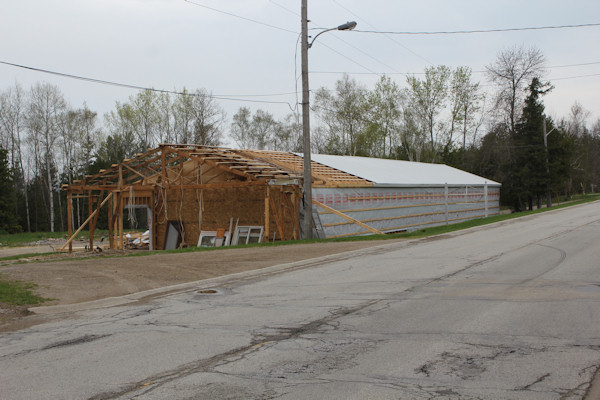

Figure W7G: Top: Wiarton Windows and Doors (former location of beet sugar factory) c. 2004; Middle: Storage units under construction (May 2015); Bottom: Storage units as of Aug. 2023.
Figure W7H shows a closer view of the old beet sugar factory foundation extending beyond the footprint of the storage units, still under construction in May 2015 and later as of August 2023.
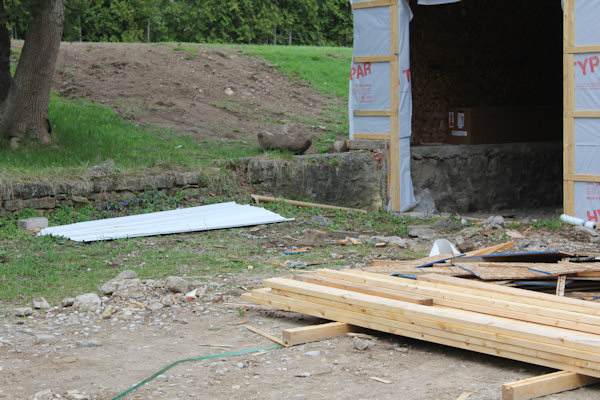

Figure W7H: Foundation of the Wiarton Beet Sugar Factory as of May 2015 (top) and August 2023 (bottom).
As for the Dominion Sugar Co, it merged with Redpath Sugars in 1930 and continues to operate today. There is currently only one beet sugar plant left in Canada. It's located in Taber, Alberta.

